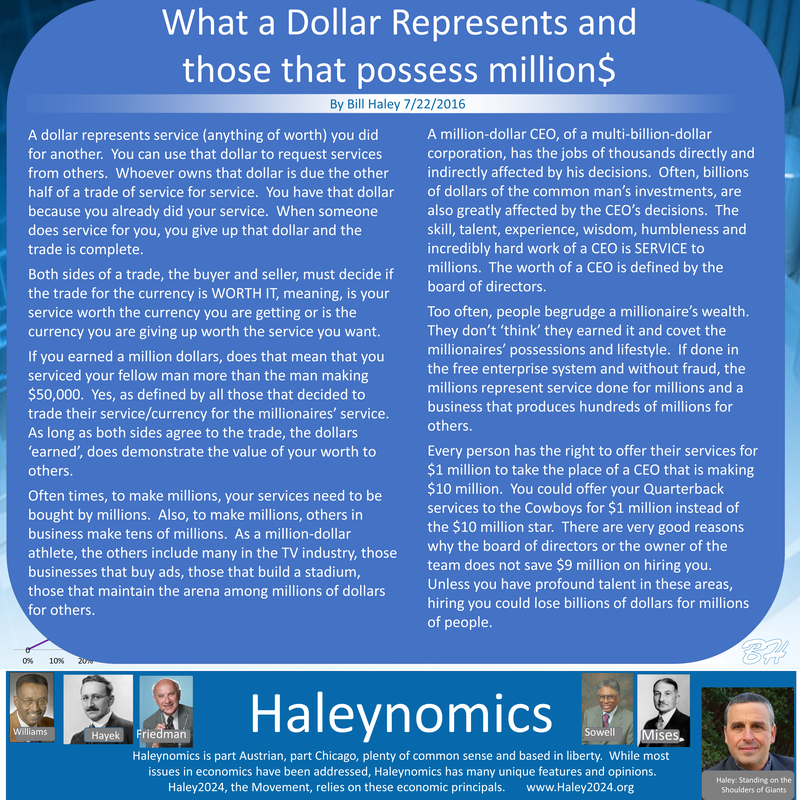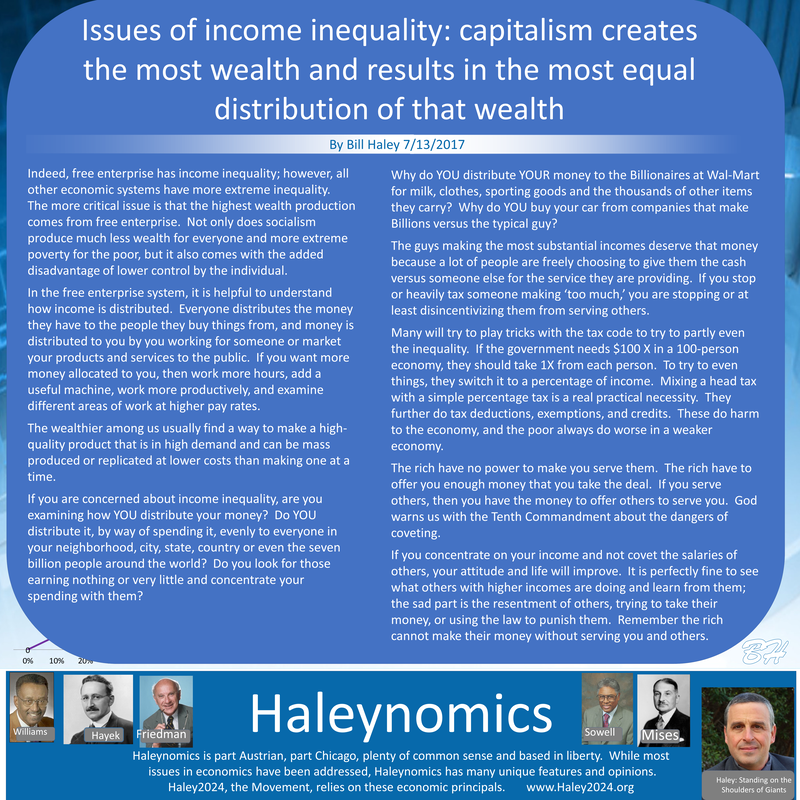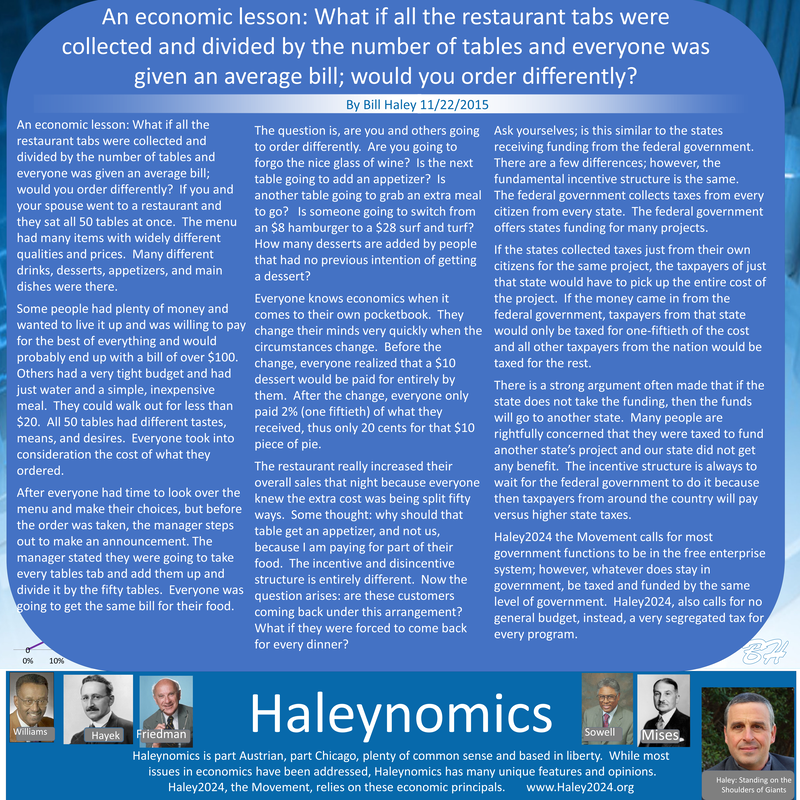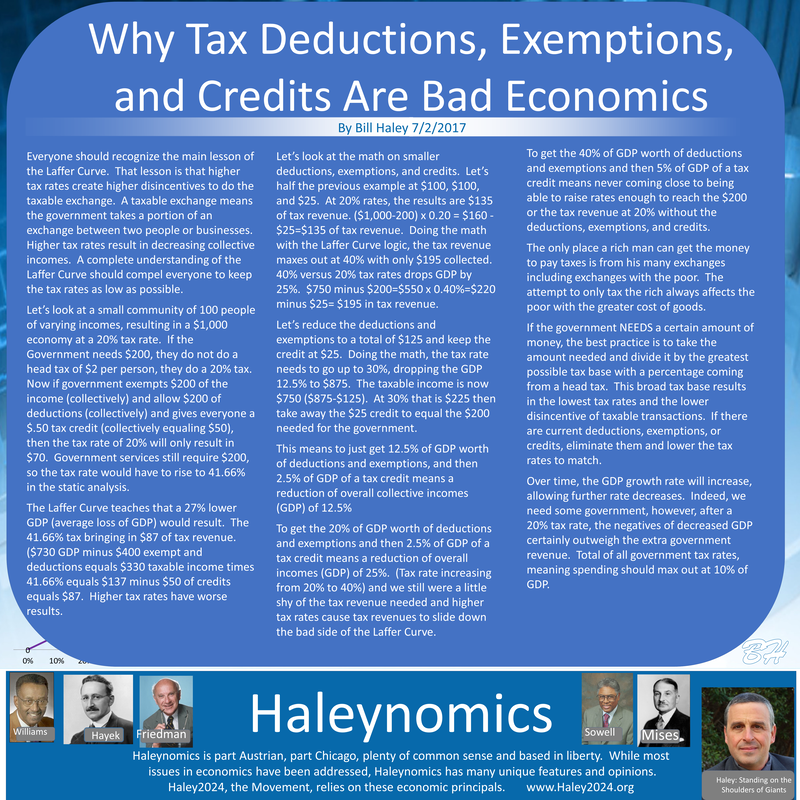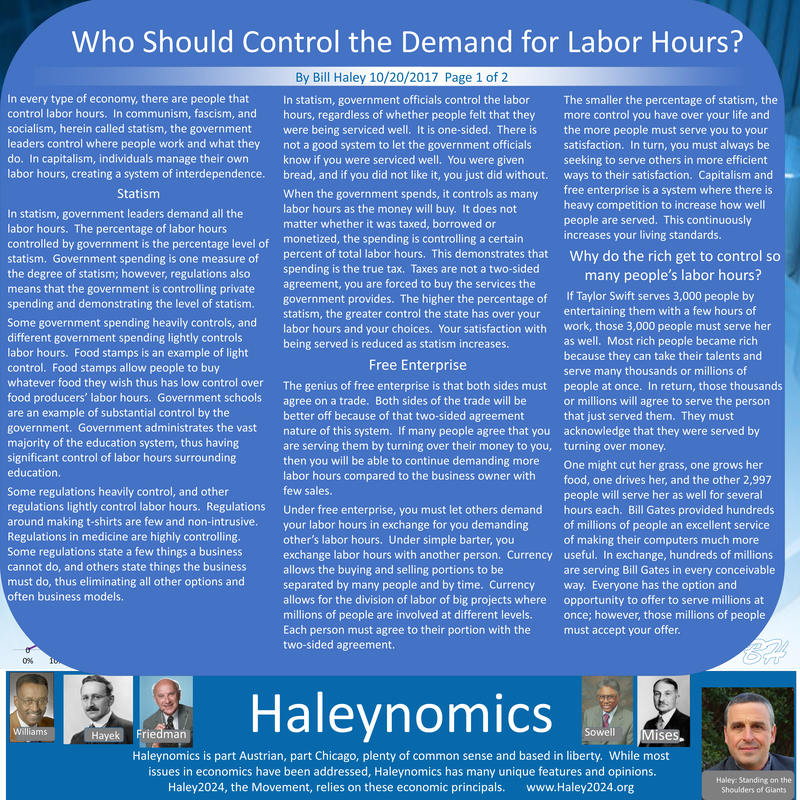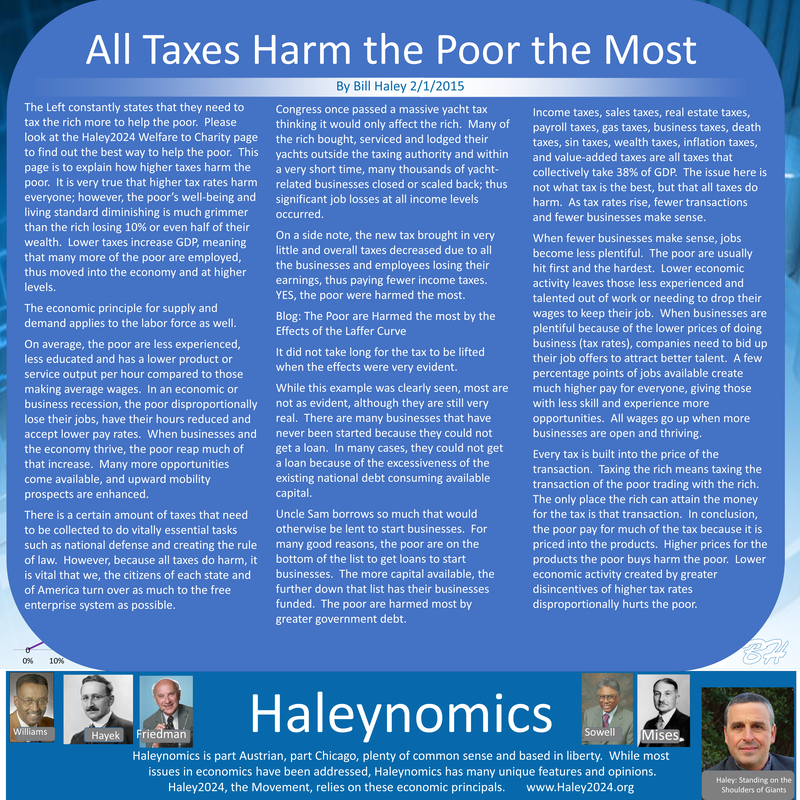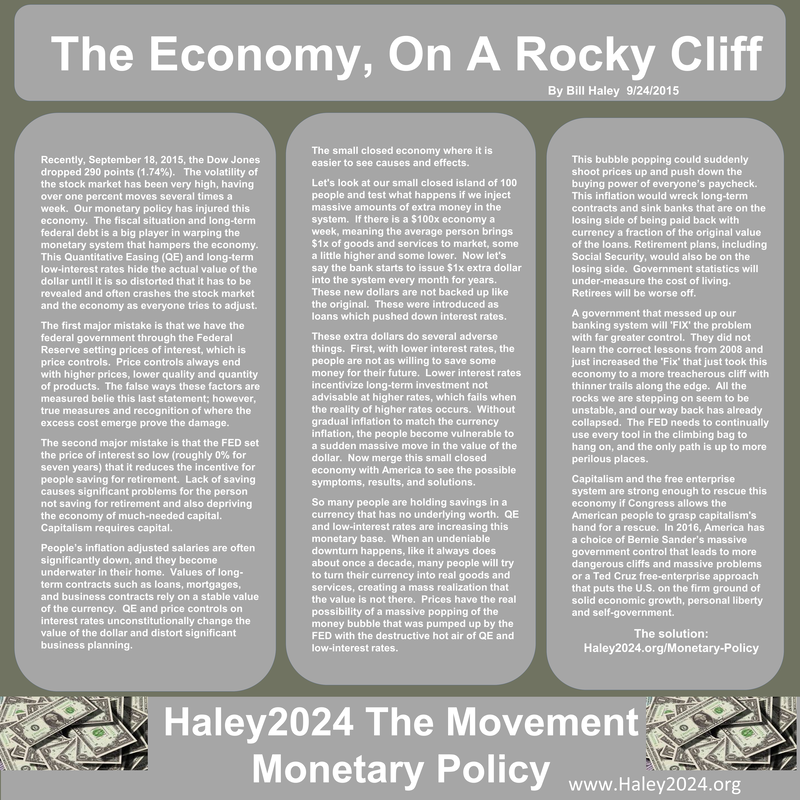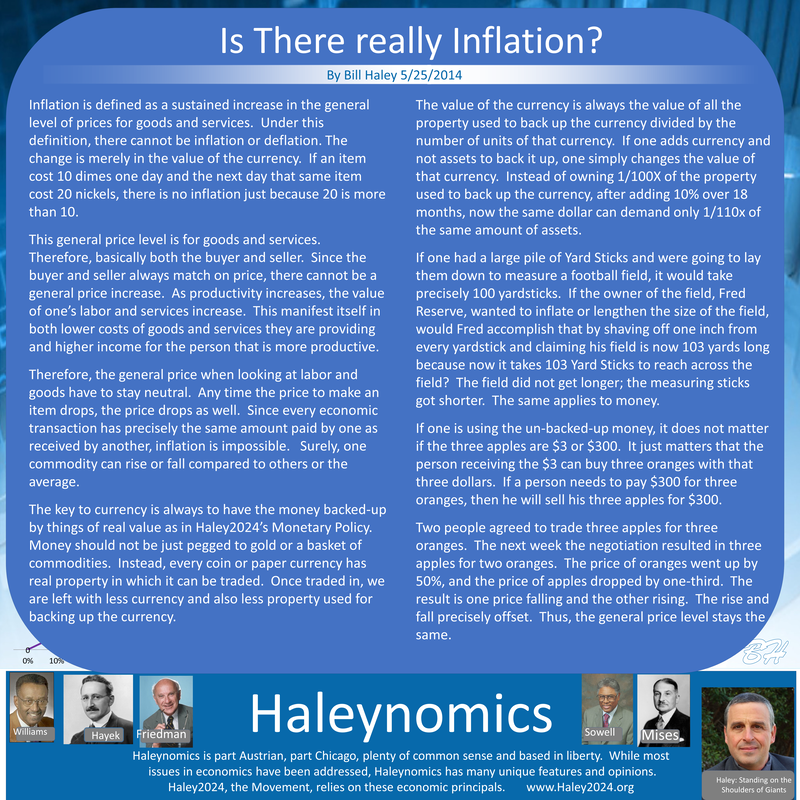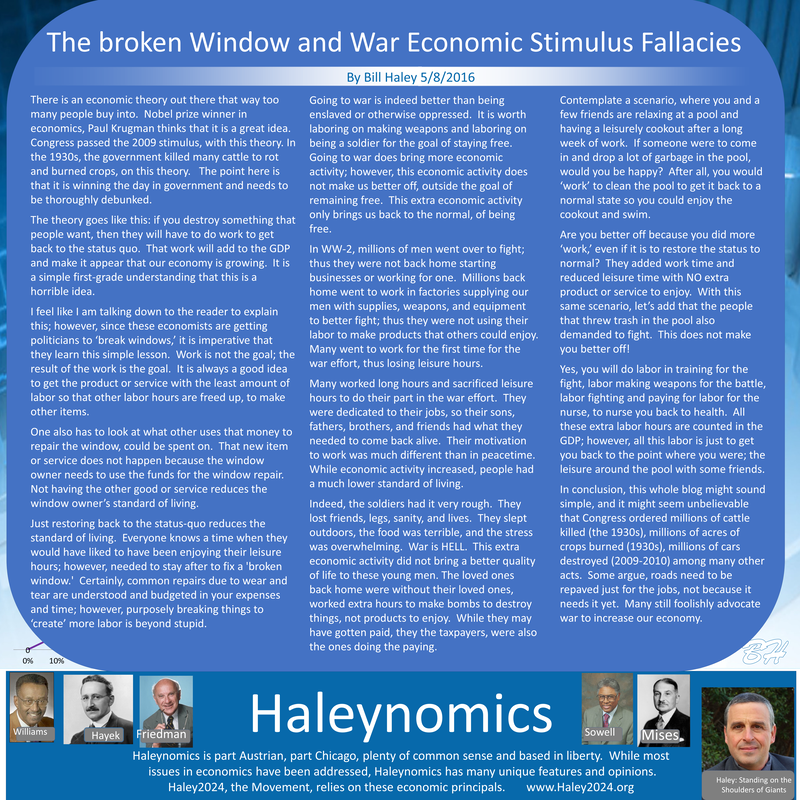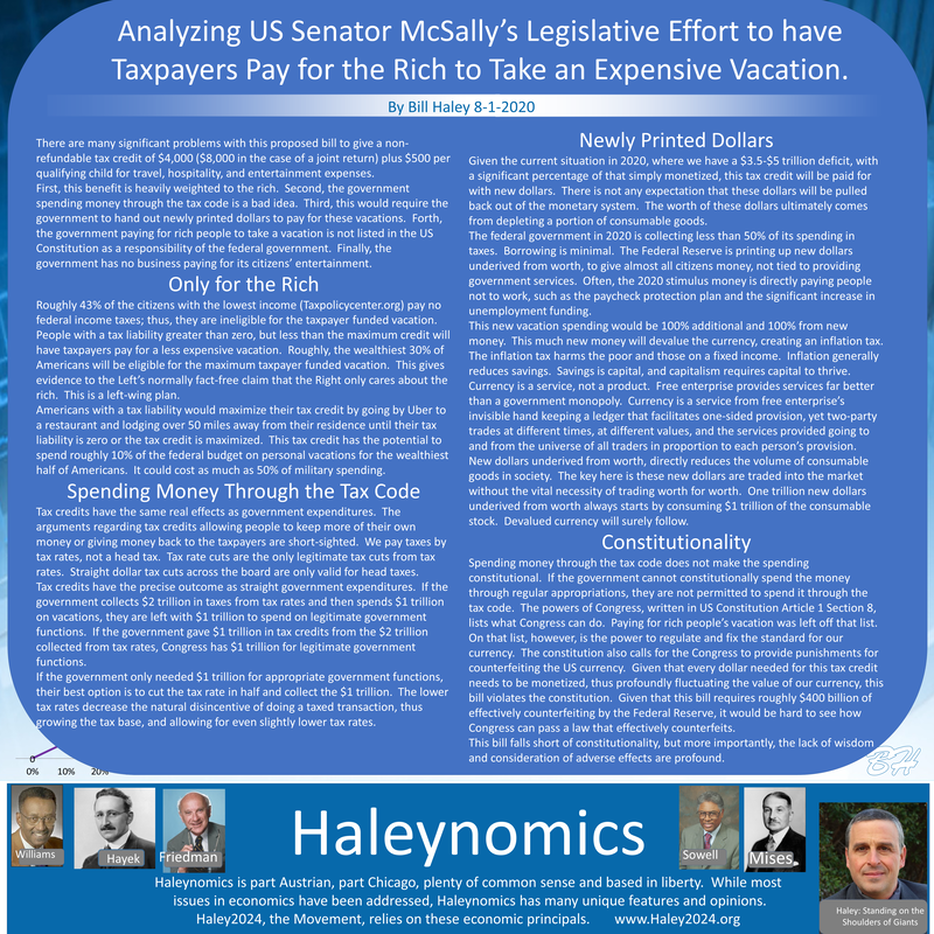| There are many significant problems with this proposed bill to give a non-refundable tax credit of $4,000 ($8,000 in the case of a joint return) plus $500 per qualifying child for travel, hospitality, and entertainment expenses. |
| First, this benefit is heavily weighted to the rich. Second, the government spending money through the tax code is a bad idea. Third, this would require the government to hand out newly printed dollars to pay for these vacations. Forth, the government paying for rich people to take a vacation is not listed in the US Constitution as a responsibility of the federal government. Finally, the government has no business paying for its citizens’ entertainment. |
Only for the Rich
| Roughly 43% of the citizens with the lowest income (Taxpolicycenter.org) pay no federal income taxes; thus, they are ineligible for the taxpayer funded vacation. People with a tax liability greater than zero, but less than the maximum credit will have taxpayers pay for a less expensive vacation. Roughly, the wealthiest 30% of Americans will be eligible for the maximum taxpayer funded vacation. This gives evidence to the Left’s normally fact-free claim that the Right only cares about the rich. This is a left-wing plan. |
| Americans with a tax liability would maximize their tax credit by going by Uber to a restaurant and lodging over 50 miles away from their residence until their tax liability is zero or the tax credit is maximized. This tax credit has the potential to spend roughly 10% of the federal budget on personal vacations for the wealthiest half of Americans. It could cost as much as 50% of military spending. |
Spending Money Through the Tax Code
| Tax credits have the same real effects as government expenditures. The arguments regarding tax credits allowing people to keep more of their own money or giving money back to the taxpayers are short-sighted. We pay taxes by tax rates, not a head tax. Tax rate cuts are the only legitimate tax cuts from tax rates. Straight dollar tax cuts across the board are only valid for head taxes. |
| Tax credits have the precise outcome as straight government expenditures. If the government collects $2 trillion in taxes from tax rates and then spends $1 trillion on vacations, they are left with $1 trillion to spend on legitimate government functions. If the government gave $1 trillion in tax credits from the $2 trillion collected from tax rates, Congress has $1 trillion for legitimate government functions. |
| If the government only needed $1 trillion for appropriate government functions, their best option is to cut the tax rate in half and collect the $1 trillion. The lower tax rates decrease the natural disincentive of doing a taxed transaction, thus growing the tax base, and allowing for even slightly lower tax rates. |
Newly Printed Dollars
| Given the current situation in 2020, where we have a $3.5-$5 trillion deficit, with a significant percentage of that simply monetized, this tax credit will be paid for with new dollars. There is not any expectation that these dollars will be pulled back out of the monetary system. The worth of these dollars ultimately comes from depleting a portion of consumable goods. |
| The federal government in 2020 is collecting less than 50% of its spending in taxes. Borrowing is minimal. The Federal Reserve is printing up new dollars underived from worth, to give almost all citizens money, not tied to providing government services. Often, the 2020 stimulus money is directly paying people not to work, such as the paycheck protection plan and the significant increase in unemployment funding. |
| This new vacation spending would be 100% additional and 100% from new money. This much new money will devalue the currency, creating an inflation tax. The inflation tax harms the poor and those on a fixed income. Inflation generally reduces savings. Savings is capital, and capitalism requires capital to thrive. |
| Currency is a service, not a product. Free enterprise provides services far better than a government monopoly. Currency is a service from free enterprise’s invisible hand keeping a ledger that facilitates one-sided provision, yet two-party trades at different times, at different values, and the services provided going to and from the universe of all traders in proportion to each person’s provision. |
| New dollars underived from worth, directly reduces the volume of consumable goods in society. The key here is these new dollars are traded into the market without the vital necessity of trading worth for worth. One trillion new dollars underived from worth always starts by consuming $1 trillion of the consumable stock. Devalued currency will surely follow. |
Constitutionality
| Spending money through the tax code does not make the spending constitutional. If the government cannot constitutionally spend the money through regular appropriations, they are not permitted to spend it through the tax code. The powers of Congress, written in US Constitution Article 1 Section 8, lists what Congress can do. Paying for rich people’s vacation was left off that list. |
| On that list, however, is the power to regulate and fix the standard for our currency. The constitution also calls for the Congress to provide punishments for counterfeiting the US currency. Given that every dollar needed for this tax credit needs to be monetized, thus profoundly fluctuating the value of our currency, this bill violates the constitution. Given that this bill requires roughly $400 billion of effectively counterfeiting by the Federal Reserve, it would be hard to see how Congress can pass a law that effectively counterfeits. |





